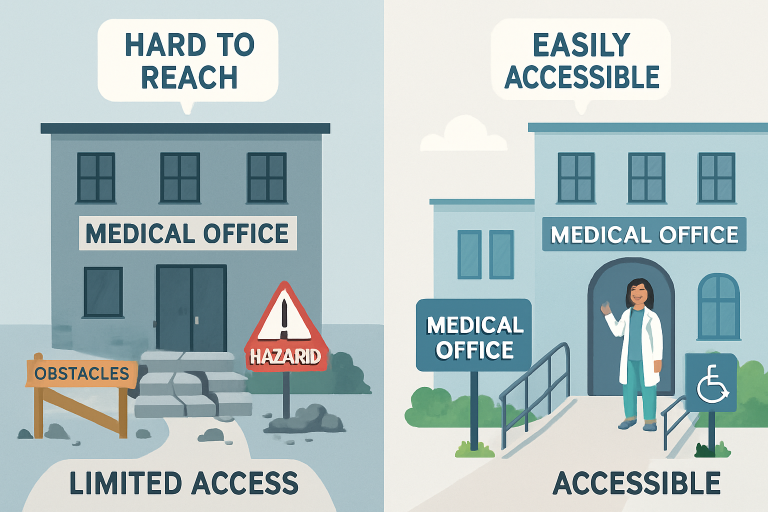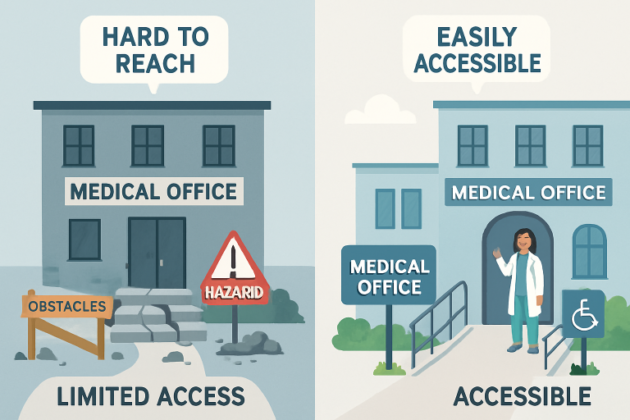Selecting a healthcare provider is a major decision that can impact your quality of life, your ability to stay healthy, and your daily routine. Despite this, many patients stay with a provider out of habit, even when there are clear signs that their needs could be better met elsewhere. Whether you require routine checkups or specialized services such as NJ DOT Physicals, recognizing the warning signs that it’s time to find a new provider can put you on the path to more accessible, responsive care.
Modern healthcare should be convenient, compassionate, and tailored to your unique circumstances. It may be time to evaluate better alternatives if your current provider doesn’t measure up, whether through limited appointment options, outdated communication, or a lack of accommodation for your needs. The following five signs can help you switch to a healthier future.

Table of Contents
Difficulty Scheduling Appointments
Struggling to book an appointment when you need one the most indicates that your provider may not have the resources or systems to offer accessible care. Delays in getting appointments—sometimes extending for weeks—can be especially problematic when you require timely attention for new symptoms or follow-ups. According to the CDC, nearly 1 in 5 adults report difficulties getting appointments due to unmet medical needs. Providers who offer same-day or next-day appointments, extended office hours, and online scheduling demonstrate a commitment to convenience.
Limited Communication Channels
Communication is the bedrock of effective healthcare. If your provider only accepts phone calls during business hours and lacks options for online portals, secure messaging, or telehealth visits, you may not get the support you need. In a digital age, patients value timely answers and the ability to communicate health concerns as they arise. Enhanced digital engagement isn’t just a convenience—it’s a proven factor in patient loyalty and satisfaction.
Inadequate Office Accessibility
The physical space of your healthcare provider matters deeply, particularly if you or a loved one faces mobility challenges. If the office lacks ramps, elevators, or accessible parking, or if the building is far from public transportation, these are valid reasons to seek a new provider. Prioritizing physical accessibility ensures that every patient can receive timely, routine, and emergency care, an essential aspect of true healthcare equity.
Unresponsive Administrative Staff
How administrative staff members interact with you can affect everything from how quickly you get help to how comfortable you feel during visits. Long hold times, lack of follow-up, or unhelpful and dismissive attitudes may signal a larger issue within the practice. Providers who value their patients foster a welcoming, responsive environment from the first phone call to every check-in at their office. A national survey published by the Agency for Healthcare Research and Quality (AHRQ) found that prompt and respectful communication is among the most important factors influencing overall satisfaction for U.S. patients.
Lack of Personalized Care
Every patient’s health journey is unique, and high-quality providers know the value of individualized attention. If your doctor seems rushed, doesn’t remember your medical history, or fails to tailor recommendations to your needs, you could miss out on the benefits of personalized care. Today’s best healthcare practices take a whole-person approach, ensuring your care plan considers your lifestyle, mental health, family history, and personal objectives.
Tips for Making the Switch
If one or more of these warning signs sound familiar, it may be time to transition to a provider who offers the accessibility and attention you deserve. The process might seem daunting, but a thoughtful approach can help ensure a smooth and beneficial change.
- Research local providers: Read reviews, consult healthcare networks, and check which providers accept new patients and offer your needed services.
- Request recommendations: Ask trusted friends, family, or colleagues if they’ve found satisfaction with other medical professionals in your area.
- Meet potential new providers: Schedule a preliminary appointment or phone consultation to evaluate whether a provider’s communication, location, and atmosphere meet your needs.
- Compare services and costs: Balance the value of improved accessibility with your insurance plan coverage and out-of-pocket expenses.
- Transfer your medical records: Ensure your new provider has up-to-date information for a seamless care transition.
Taking the step to change providers can improve your healthcare journey. By prioritizing accessibility and responsiveness—whether for routine visits or specialized needs—you empower yourself to receive the care, respect, and convenience you deserve.
